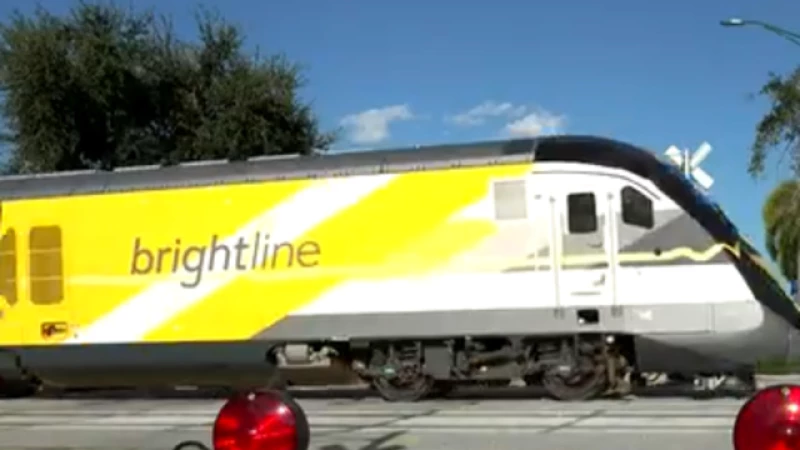As Thanksgiving approaches, millions of Americans are gearing up for holiday travel. AAA projects that over 55 million people will travel more than 50 miles, which would make this Thanksgiving the third-busiest on record.
This year, a significant development in travel options comes from Florida, where a new rail line connects Miami and Orlando. The service — the only privately owned, multi-city railroad in the U.S. — was launched less than two months ago, and is already profitable and seeing a rise in ridership.
Brightline, which offers the new service, first launched in 2018 with service between Miami and West Palm Beach. Its trains, which can reach speeds of 125 miles per hour, have seen a 116% increase in ridership this year. The company anticipates accommodating approximately 4.3 million passengers annually between South Florida and Orlando by 2025.
Jack Fernandez, who takes it monthly between West Palm Beach and Miami, said he likes the convenience and efficiency of the trains.
"You can get work done. You can make phone calls. You don't have to worry about the stress of having accidents in front of you and the uncertainty," Fernandez said.
In contrast to costly and delayed public projects, like California's high-speed rail, Brightline has taken a different approach. The company constructed its initial service between West Palm and Miami in just four years, utilizing an existing freight line. This efficient strategy helped expedite the permitting and construction process. The rail will eventually extend to Tampa.
Brightline's high-speed train offers a competitive alternative to road travel, with amenities like in-seat food service and high-quality leather seats. Wes Edens, Brightline's chairman, stated that the Orlando-Miami route saves passengers an average of between one to two hours.
Now, Brightline has set its sights on linking Los Angeles and Las Vegas. The $12 billion project is expected to be operational in four years, with train speeds exceeding 200 miles per hour.
"There's no doubt that there are many, many corridors in the United States that would fit this bill where you're going to save people a considerable amount of time," said Wes Edens. He expressed optimism about the Vegas project, stating that the company is currently in the "pay for it part" and expects to be in a good position by the end of the year.
While high-speed rails have been successful in Europe and Asia, transit experts note that they require substantial public funding. The bipartisan infrastructure bill has allocated $66 billion for rail, indicating a potential boost for future projects.
"We're investing in what we believe in, and when the private sector can contribute significantly, taxpayer funds go a long way," stated Transportation Secretary Pete Buttigieg, who recently experienced Brightline firsthand.
Although the fastest trains in the United States still fall behind their European counterparts, they transport approximately 100,000 individuals daily between Washington, D.C., New York, and Boston.
Amtrak has developed a long-term strategy that aims to introduce higher-speed rail connections across the country by 2035.
"Before people can get excited about expanding to other markets, the public needs to witness the potential of rail travel," commented Roger Harris, President of Amtrak.
"It's not just about distance; it's primarily about alleviating congestion because people don't want to be frustrated while sitting in traffic," added Harris.







